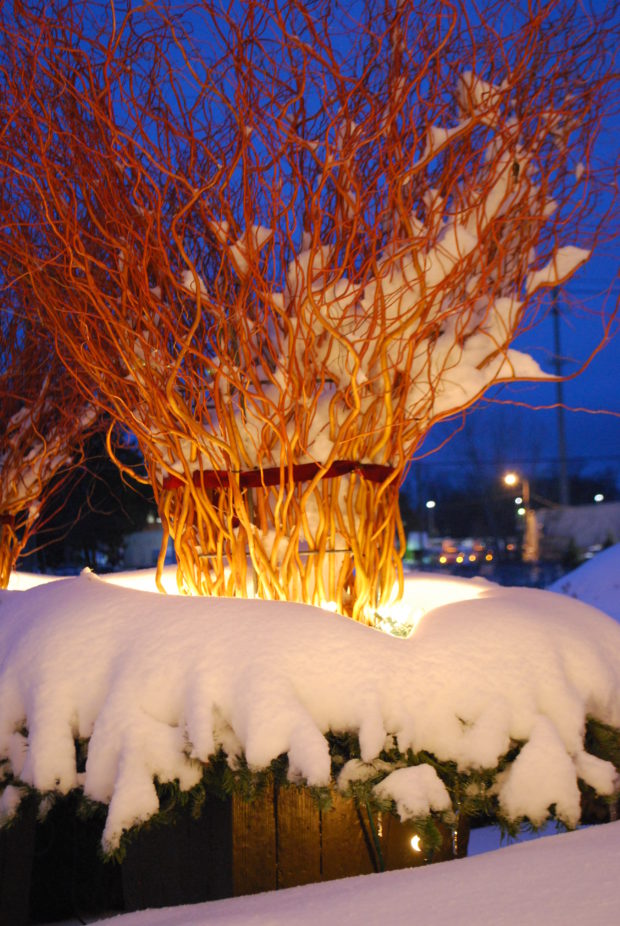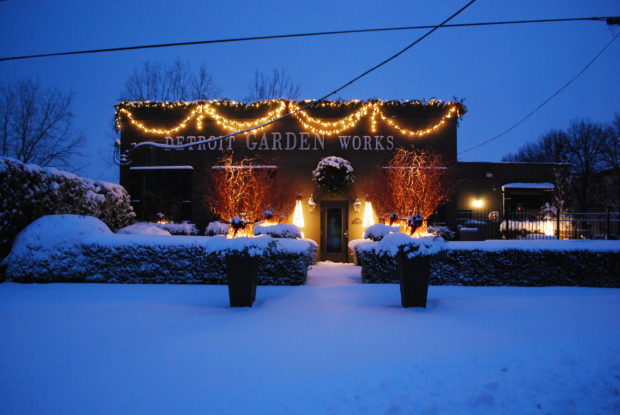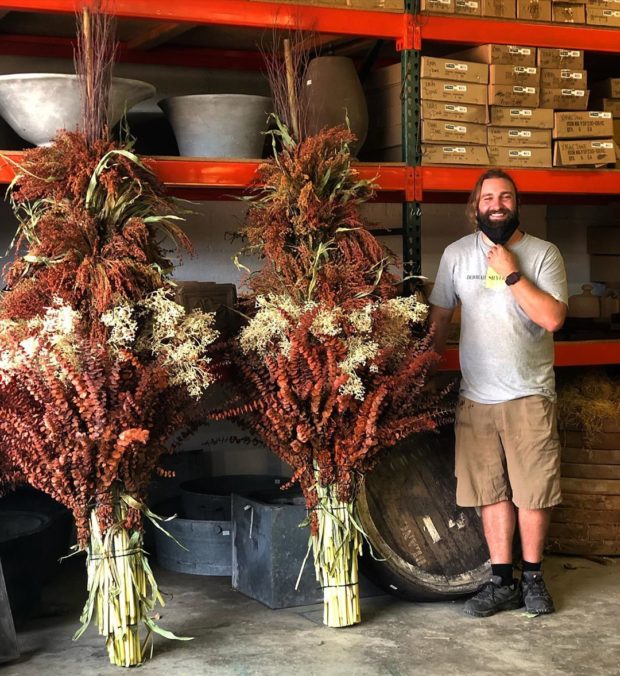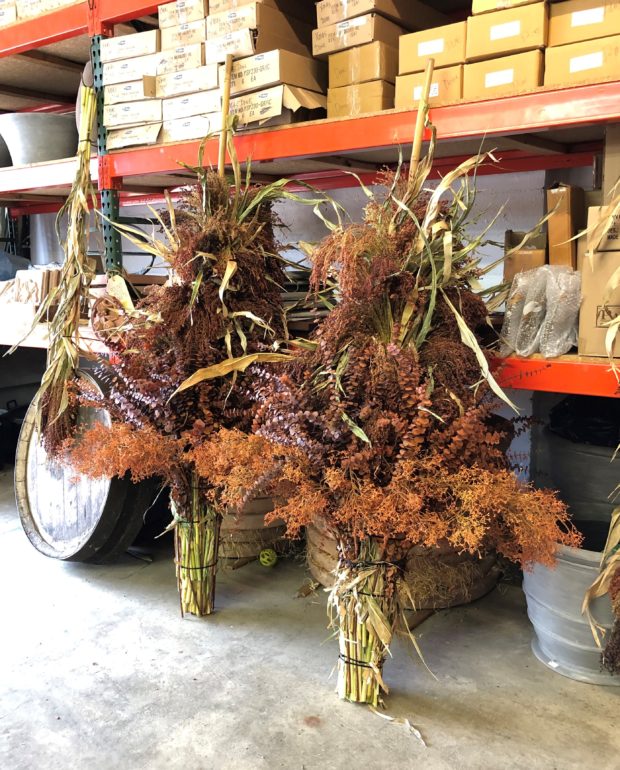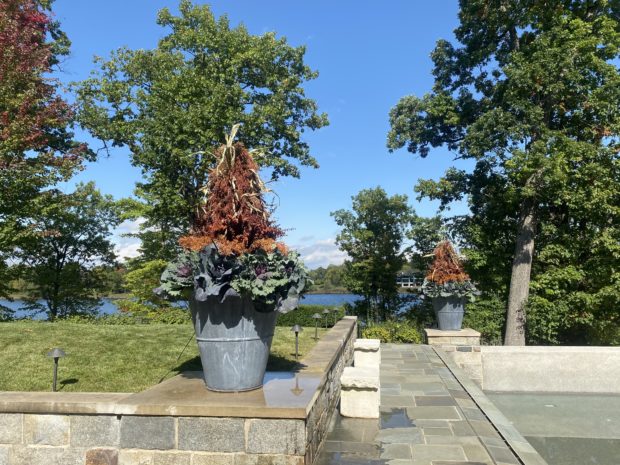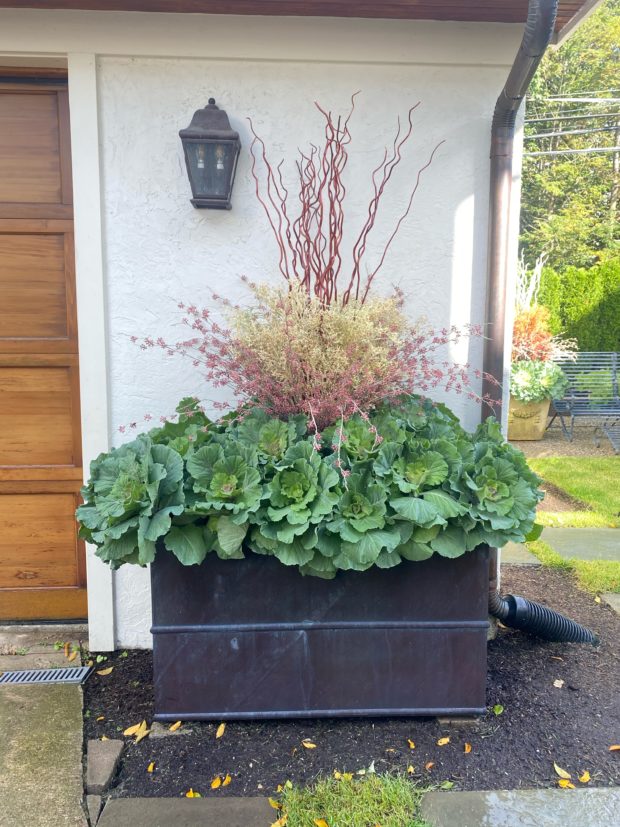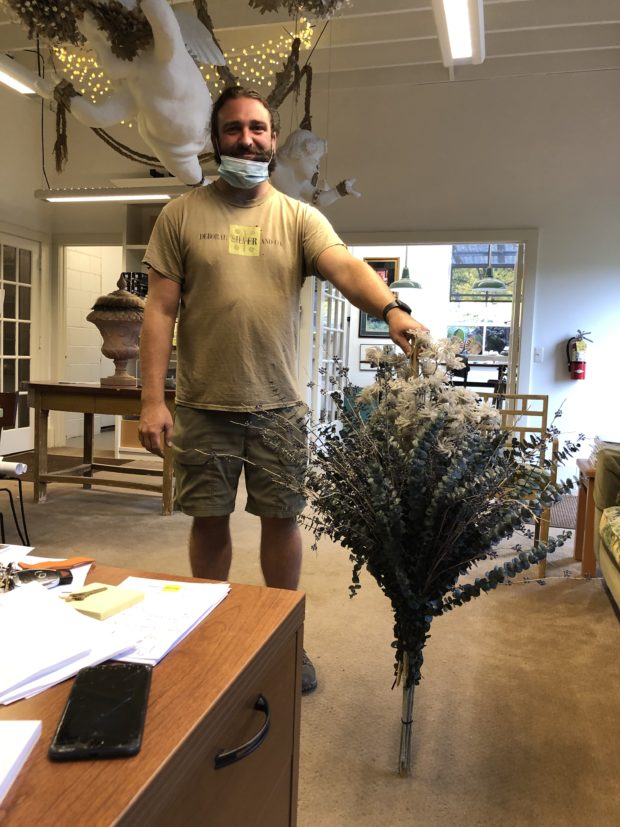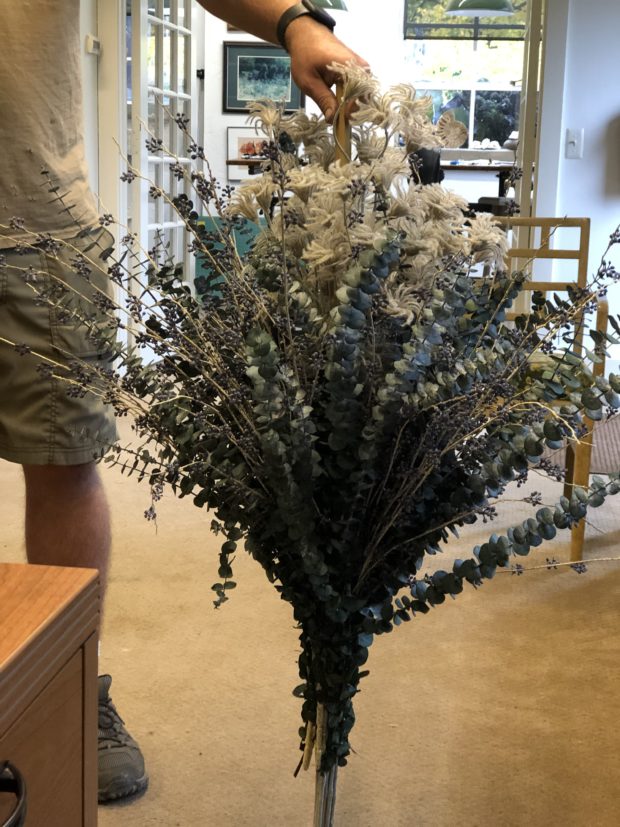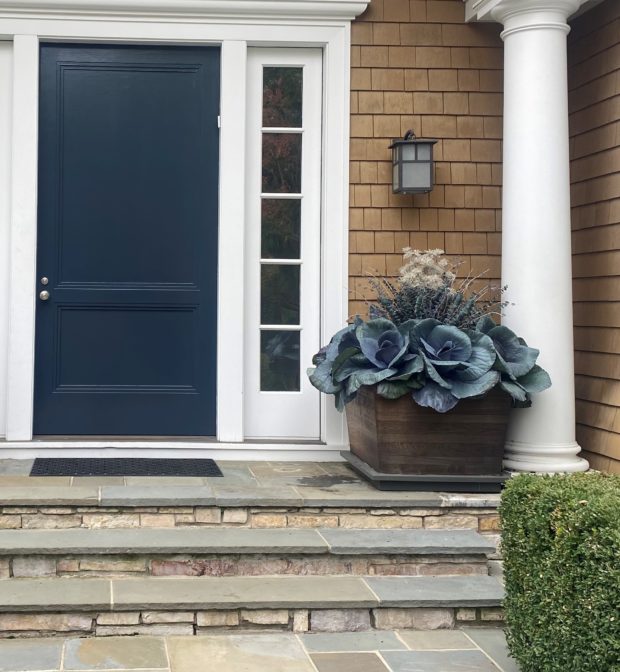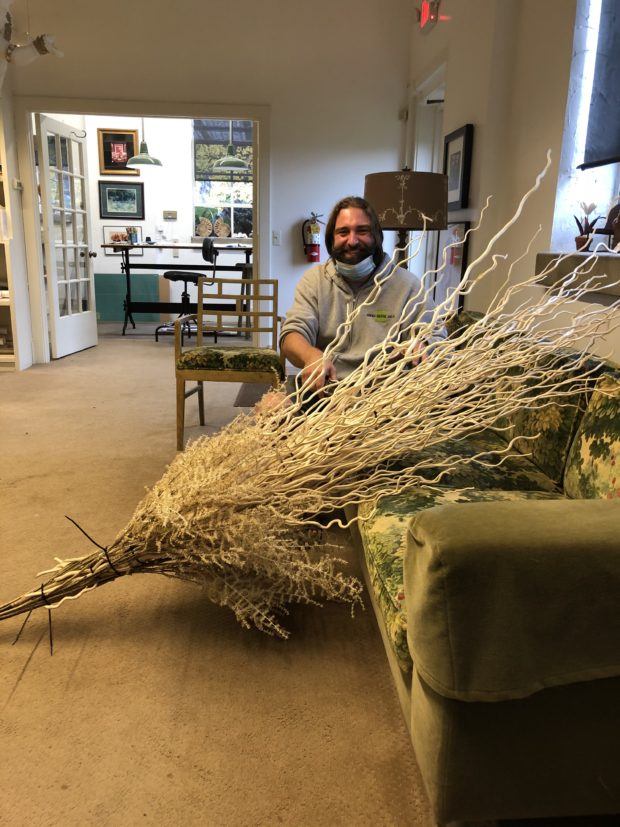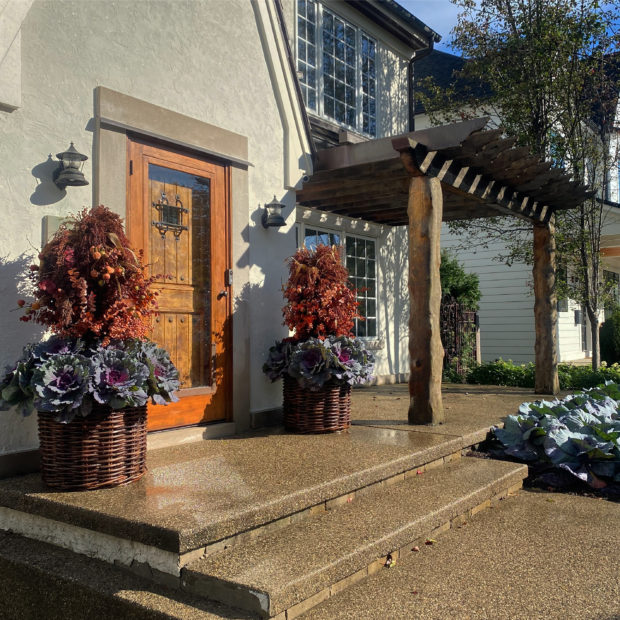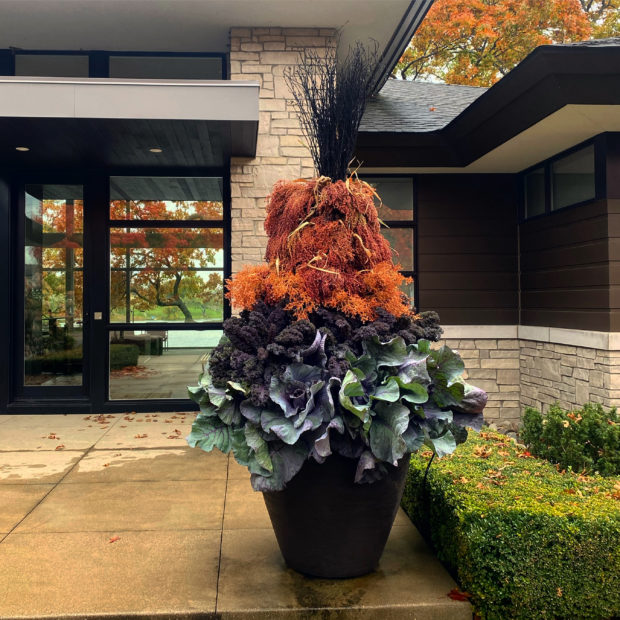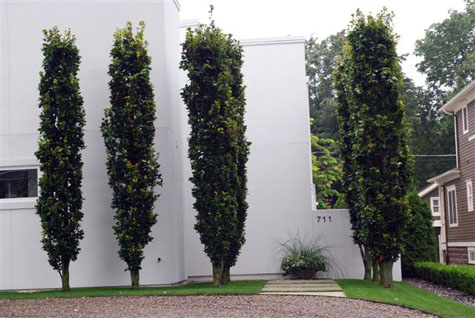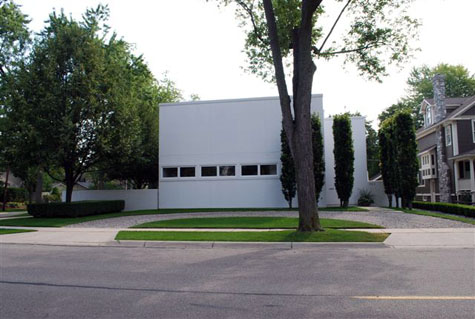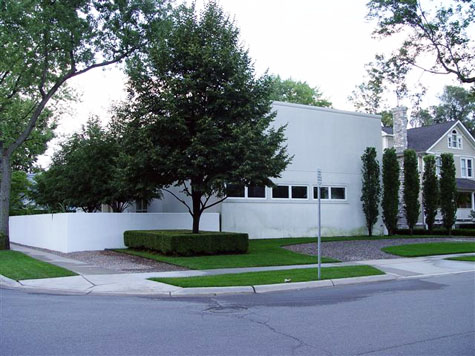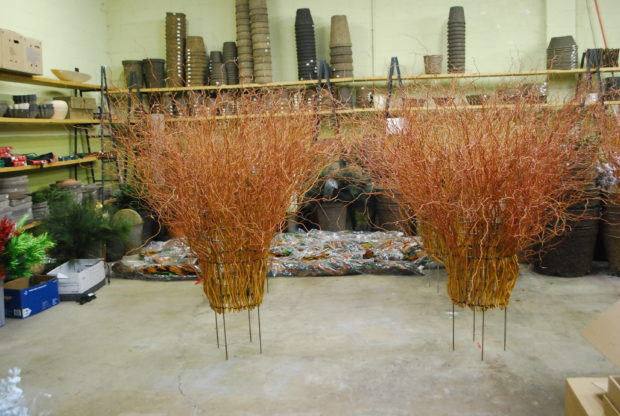 Late in December of 2012, we were gearing up to install the winter pots and lighting at Detroit Garden Works. Central to that display were 6 tall narrow concrete pots that had been fabricated at Branch. They were the devil to address, no matter the season. How so? Despite their height and heft, the top opening was a paltry 11″ by 11″. Barely enough space there to say hello, much less make a statement. Making a statement in the landscape involves a grasp of scale and proportion. This is a way of saying that every gesture you make will read better if it is generous enough to hold its own in a natural environment. Tomato cages had prongs only 9″ apart-they would easily fit down into the pots. 100 stems of copper curly willow were zip tied in 2 places to each form. When you compare the volume and square footage of twigs at the tip top to the space occupied by the prongs at the bottom, it is easy to see how something of great scale can be fashioned from an opportunity created by a tool, device or armature. Absent a tomato cage, some bamboo stakes or stout branches held in position with wire could accomplish the same thing. Absent a stash of copper curly willow, pruning debris, or the skeletal remains of weeds in the field could create the same shape. The human species is one of very few that comes standard issue with the ability to make and use tools. And the gift for improvisation.
Late in December of 2012, we were gearing up to install the winter pots and lighting at Detroit Garden Works. Central to that display were 6 tall narrow concrete pots that had been fabricated at Branch. They were the devil to address, no matter the season. How so? Despite their height and heft, the top opening was a paltry 11″ by 11″. Barely enough space there to say hello, much less make a statement. Making a statement in the landscape involves a grasp of scale and proportion. This is a way of saying that every gesture you make will read better if it is generous enough to hold its own in a natural environment. Tomato cages had prongs only 9″ apart-they would easily fit down into the pots. 100 stems of copper curly willow were zip tied in 2 places to each form. When you compare the volume and square footage of twigs at the tip top to the space occupied by the prongs at the bottom, it is easy to see how something of great scale can be fashioned from an opportunity created by a tool, device or armature. Absent a tomato cage, some bamboo stakes or stout branches held in position with wire could accomplish the same thing. Absent a stash of copper curly willow, pruning debris, or the skeletal remains of weeds in the field could create the same shape. The human species is one of very few that comes standard issue with the ability to make and use tools. And the gift for improvisation. 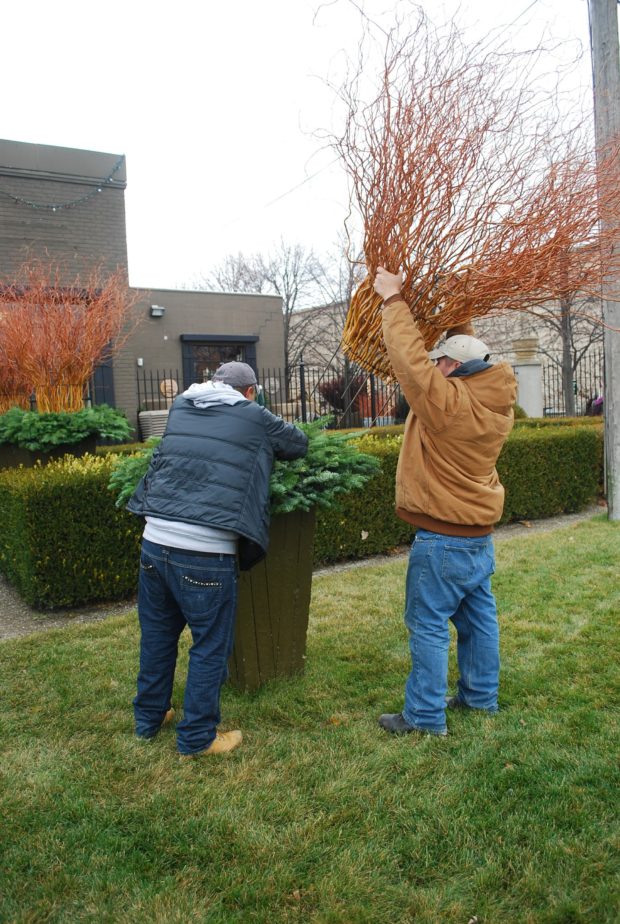 Nature is an awe inspiring and implacable force. As is, on a smaller but surprisingly determined scale, the evidence of the human hand. That intense interaction between forces over the the landscape and garden has held my interest for a half century. That time seems short to me, for as much as the laws of nature continually and unpredictably assert themselves, a landscape and garden continually presents a fresh opportunity to respond and interact with the out of doors. Some interaction is characterized by defiance, as Henry Mitchell so famously once said. Other relationships forged over design are marked by surprise, discovery, or dismay. Add a dash of regret and a sprinkling of wrong thinking – you get the idea. Such is my anecdotal evidence that a landscape imagined and created by design can be a very long and satisfying affair.
Nature is an awe inspiring and implacable force. As is, on a smaller but surprisingly determined scale, the evidence of the human hand. That intense interaction between forces over the the landscape and garden has held my interest for a half century. That time seems short to me, for as much as the laws of nature continually and unpredictably assert themselves, a landscape and garden continually presents a fresh opportunity to respond and interact with the out of doors. Some interaction is characterized by defiance, as Henry Mitchell so famously once said. Other relationships forged over design are marked by surprise, discovery, or dismay. Add a dash of regret and a sprinkling of wrong thinking – you get the idea. Such is my anecdotal evidence that a landscape imagined and created by design can be a very long and satisfying affair.
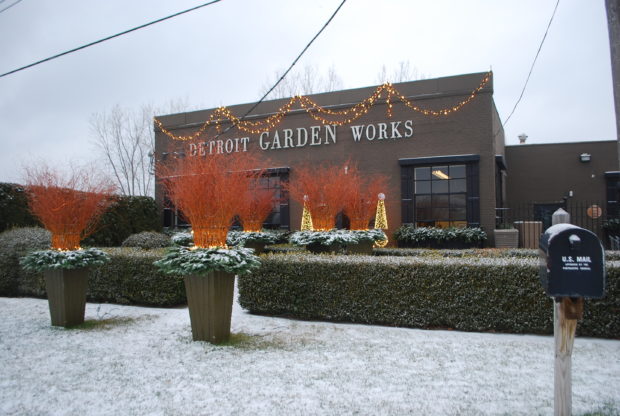 I was hardly prepared for the outcome of the willow stacks, once they were placed. The thick glossy and architectural willow stems en masse were cloud like from even a short distance away. The repetition of the pots visually strengthened and clarified the the idea. The blue gray skies made that orange colored willow all the more vibrant. In no way did that color blend in with or repeat an existing color. It was a dramatically contrasting element. The verticality of the willow was in opposition to the long lengths of boxwood. The willow soared over a largely horizontal landscape. All this from some willow zip tied to a tomato cage. The success or sleepiness of any designed element in a landscape is revealed the moment it is put in place. It is simple to see what reads well once nature has had a chance to work on it. It is very hard to anticipate what will work in advance. Designers do drawings and make models, but the longer I design the more I am convinced that drawings are most useful for the parameters they set, and what they suggest. Drawings are certainly of use In this case, I made a decision about how to handle the pots, and was prepared to revise and adjust, once they were placed.
I was hardly prepared for the outcome of the willow stacks, once they were placed. The thick glossy and architectural willow stems en masse were cloud like from even a short distance away. The repetition of the pots visually strengthened and clarified the the idea. The blue gray skies made that orange colored willow all the more vibrant. In no way did that color blend in with or repeat an existing color. It was a dramatically contrasting element. The verticality of the willow was in opposition to the long lengths of boxwood. The willow soared over a largely horizontal landscape. All this from some willow zip tied to a tomato cage. The success or sleepiness of any designed element in a landscape is revealed the moment it is put in place. It is simple to see what reads well once nature has had a chance to work on it. It is very hard to anticipate what will work in advance. Designers do drawings and make models, but the longer I design the more I am convinced that drawings are most useful for the parameters they set, and what they suggest. Drawings are certainly of use In this case, I made a decision about how to handle the pots, and was prepared to revise and adjust, once they were placed.
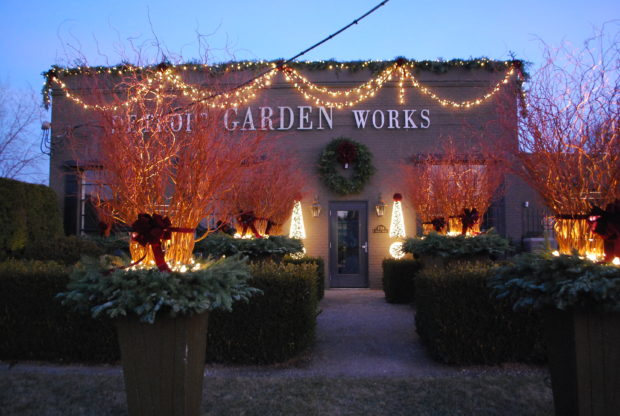 By landscape elements, I mean plants of every description size and habit, water, hard surfaces, structures, pots, ornament and sculpture. It is difficult to place some of these elements and then revise. How painful to move a walkway, or increase the size of a terrace. No one ever promised that a successfully designed landscape and garden would be easy or formulaic. But a willingness to revise the design of a landscape indicates great respect for the point of view exerted by natural world. Be advised that nature will have eventually have a say in it all. Design as you will, plant and place – the critique from nature will follow shortly. That critique will be dispassionate, and likely maddening. Relishing that interaction will make every gardener a better designer. And every designer a better gardener.
By landscape elements, I mean plants of every description size and habit, water, hard surfaces, structures, pots, ornament and sculpture. It is difficult to place some of these elements and then revise. How painful to move a walkway, or increase the size of a terrace. No one ever promised that a successfully designed landscape and garden would be easy or formulaic. But a willingness to revise the design of a landscape indicates great respect for the point of view exerted by natural world. Be advised that nature will have eventually have a say in it all. Design as you will, plant and place – the critique from nature will follow shortly. That critique will be dispassionate, and likely maddening. Relishing that interaction will make every gardener a better designer. And every designer a better gardener.
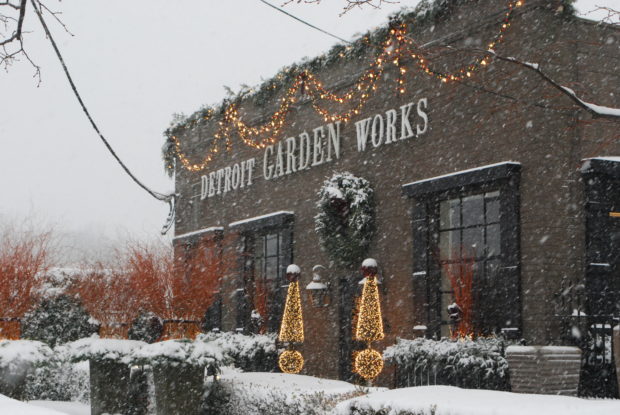 Light is essential to life. Landscape design mindful of lighting conditions for plants and for people is good landscape design. Every gardener in my zone is aware of how the short gray sunless days reiterates that the garden has gone dormant. I would rather design my way around that situation rather than go dormant. Good design directly addresses as many scenarios as possible. Even the dark daunting days. Nature always suggests how I could better accomplish that by looking over the work. A landscape lighting design for the winter landscape is design fueled by need. Nature obligingly provides the dark days. A good designer is willing to take that cue, and shine. Lighting by design makes every landscape engage the dark in a way that is friendly to people.
Light is essential to life. Landscape design mindful of lighting conditions for plants and for people is good landscape design. Every gardener in my zone is aware of how the short gray sunless days reiterates that the garden has gone dormant. I would rather design my way around that situation rather than go dormant. Good design directly addresses as many scenarios as possible. Even the dark daunting days. Nature always suggests how I could better accomplish that by looking over the work. A landscape lighting design for the winter landscape is design fueled by need. Nature obligingly provides the dark days. A good designer is willing to take that cue, and shine. Lighting by design makes every landscape engage the dark in a way that is friendly to people.
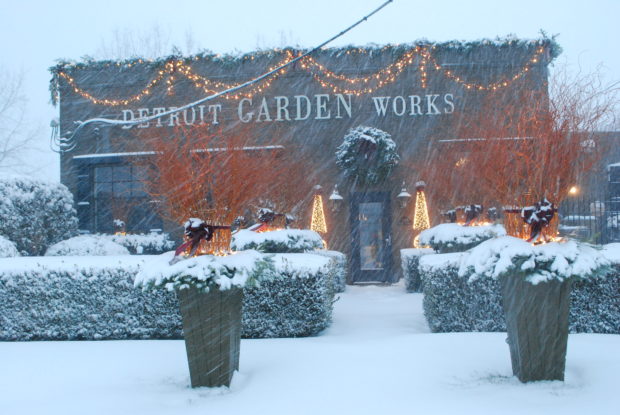 I have been designing and installing a winter garden for Detroit Garden Works for the past 15 years. Every year is different. But no matter the specifics, I know that garden has to withstand the worst of what nature has to dish out. The wind, cold and snow can blow away all and everything that is not secure. Any landscape element needs to be constructed with strength and longevity in mind. Make to last.
I have been designing and installing a winter garden for Detroit Garden Works for the past 15 years. Every year is different. But no matter the specifics, I know that garden has to withstand the worst of what nature has to dish out. The wind, cold and snow can blow away all and everything that is not secure. Any landscape element needs to be constructed with strength and longevity in mind. Make to last.
 Once the wind quits blowing, the effect of the snow dust on the willow is enchanting. Since the weather makes itself known in a different way each and every day, landscape design which showcases that unique natural phenomenon produces a landscape that is revitalized daily. Well, sometimes vitality. Sometimes mortality. The same result can be had by placing plants in conditions in which they thrive. Nature will be in charge of how plants prosper, or fail. These cut natural materials cut nature out of a portion of the winter relationship. I will not need to worry about how the twigs and greens will prosper and grow. The winter seasonal display is a rare opportunity for a designer to express themselves freely. Nature provides the frosting.
Once the wind quits blowing, the effect of the snow dust on the willow is enchanting. Since the weather makes itself known in a different way each and every day, landscape design which showcases that unique natural phenomenon produces a landscape that is revitalized daily. Well, sometimes vitality. Sometimes mortality. The same result can be had by placing plants in conditions in which they thrive. Nature will be in charge of how plants prosper, or fail. These cut natural materials cut nature out of a portion of the winter relationship. I will not need to worry about how the twigs and greens will prosper and grow. The winter seasonal display is a rare opportunity for a designer to express themselves freely. Nature provides the frosting.
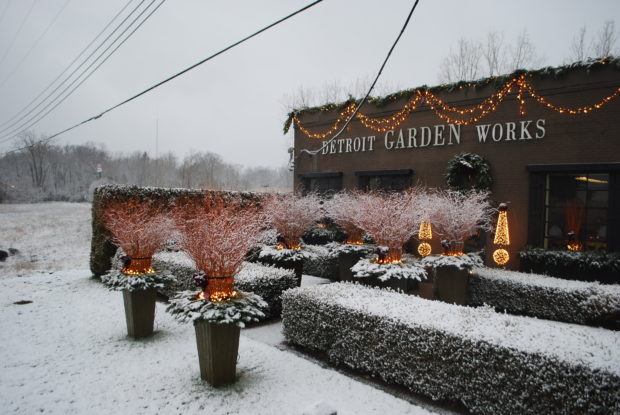 It is not as if anyone could fault the winter landscape at the shop without the pots and lights. It would be equally dour and dormant as all else within view. But the landscape, pots, lights, gray skies and snow from 2012 tells a story. A story I am happy to tell again.
It is not as if anyone could fault the winter landscape at the shop without the pots and lights. It would be equally dour and dormant as all else within view. But the landscape, pots, lights, gray skies and snow from 2012 tells a story. A story I am happy to tell again.
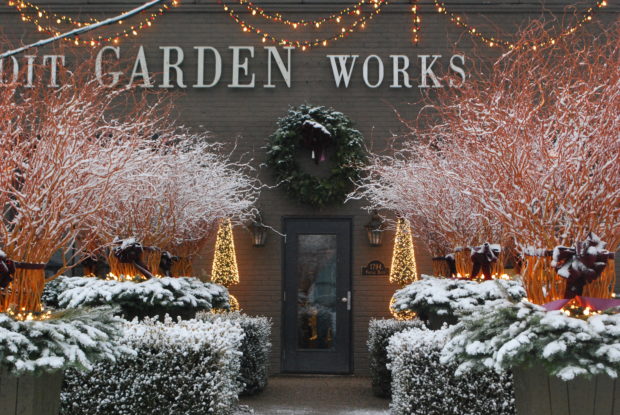 Why am I blathering on about design at such length? Because it is January. I have time to. You do too.
Why am I blathering on about design at such length? Because it is January. I have time to. You do too.

